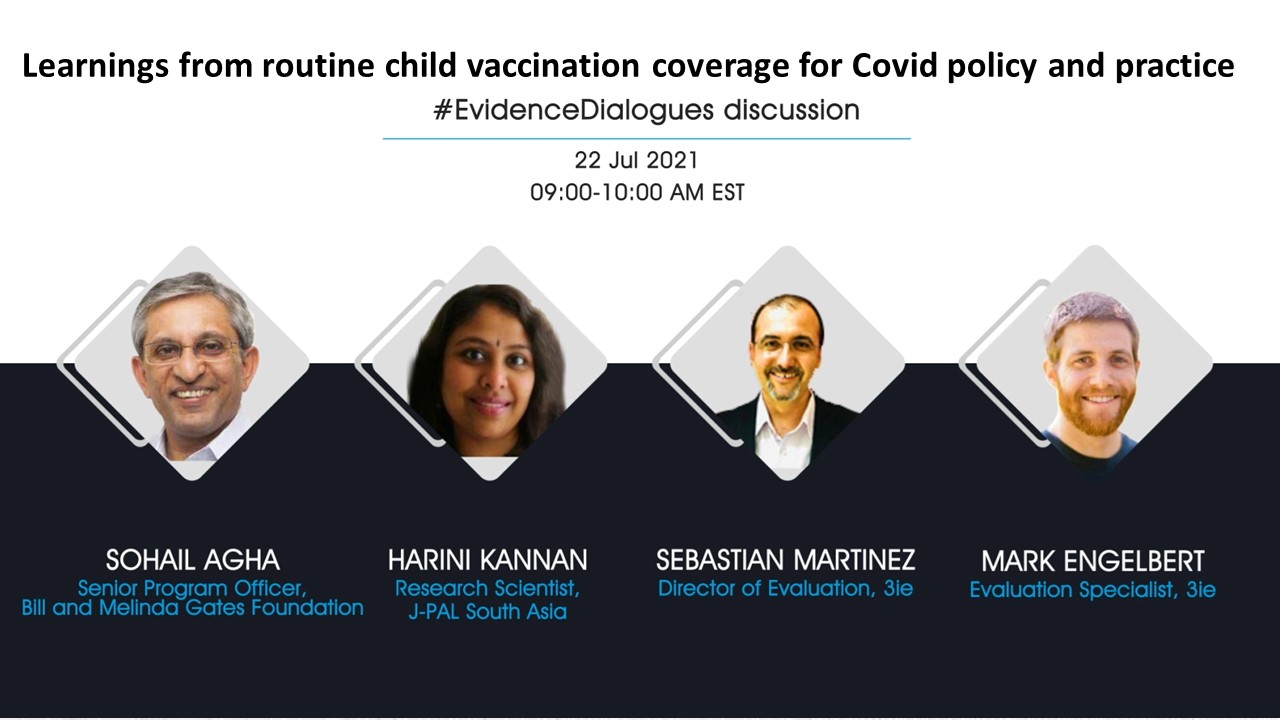Evidence Dialogues: A new Evidence Gap Map shows what we know, and what we don’t, about routine vaccinations
While the COVID pandemic may be what brought vaccinations to the forefront of global headlines, the public health community has been working for decades to make sure everyone gets the shots they need.
On Thursday, experts gathered for a 3ie Evidence Dialogues discussion to reflect on a new resource for those looking for evidence about how best to accomplish that aim: 3ie’s new Evidence Gap Map on routine childhood immunizations.
The map does not specifically address COVID vaccines – it is part of a research program on routine vaccinations which was launched years before the pandemic began. Nonetheless, the experts at our panel discussed its implications for the unique health challenges the world faces today.
“I think what is to me the most interesting is where evidence is missing, and there is quite a lot of areas where evidence is missing,” said Sohail Agha, a senior program officer at the Bill and Melinda Gates Foundation.
The Evidence Gap Map categorizes the studies it includes by outcome measure, grouped into three categories: barriers faced by caregivers and communities, effects on health systems, and final vaccination rates. The evidence mostly looks at barriers or final vaccination rates, said 3ie Evaluation Specialist Mark Engelbert.
“We basically have a great big hole in the middle, suggesting that we have very little evidence about outcomes that are related to health system capacity to deliver vaccination services,” Engelbert said.
That gap is also noteworthy because of the extra demands being placed on health systems during the pandemic.
There is a risk that requiring existing health infrastructure to deliver COVID vaccination campaigns will mean that other essential health services will get crowded out and neglected, said Harini Kannan, a research scientist at J-PAL South Asia.
“It’s very tempting to use this infrastructure, because it is a wonderful infrastructure, but somebody really needs to think through this,” Kannan said.
The absence of studies about health systems reflects a misplaced focus on an imagined lack of motivation as the primary barrier to vaccination, Agha said.
Citing survey data from Nigeria, he said that two thirds of adults in the country want a COVID vaccine – but only 38 percent feel that it is easy to access routine vaccination services.
Another evidence gap is the absence of evidence focused on disadvantaged groups, panelists said.
“Most of the research is just not designed to identify impacts on vulnerable communities,” Engelbert said. “It’s going to be the same groups that are going to be most affected by barriers to routine vaccination and to COVID vaccination.”
Solutions should aim to provide COVID vaccinations without impeding access to other services, panelists said.
“The more that we can identify ways to make routine vaccination and COVID vaccination efforts complementary rather than in competition for resources, that’s going to help,” Engelbert said.
For more details and insights, the full recorded discussion is available here.

